Garden Planning for Beginners
Keeping records about your growing season is an important part of successful homesteading. This guide on garden planning for beginners will help you set up a record binder for the things you grow.
How to start a backyard garden that you can rely on and use year after year to fill your home with amazing veggies to enjoy all year!
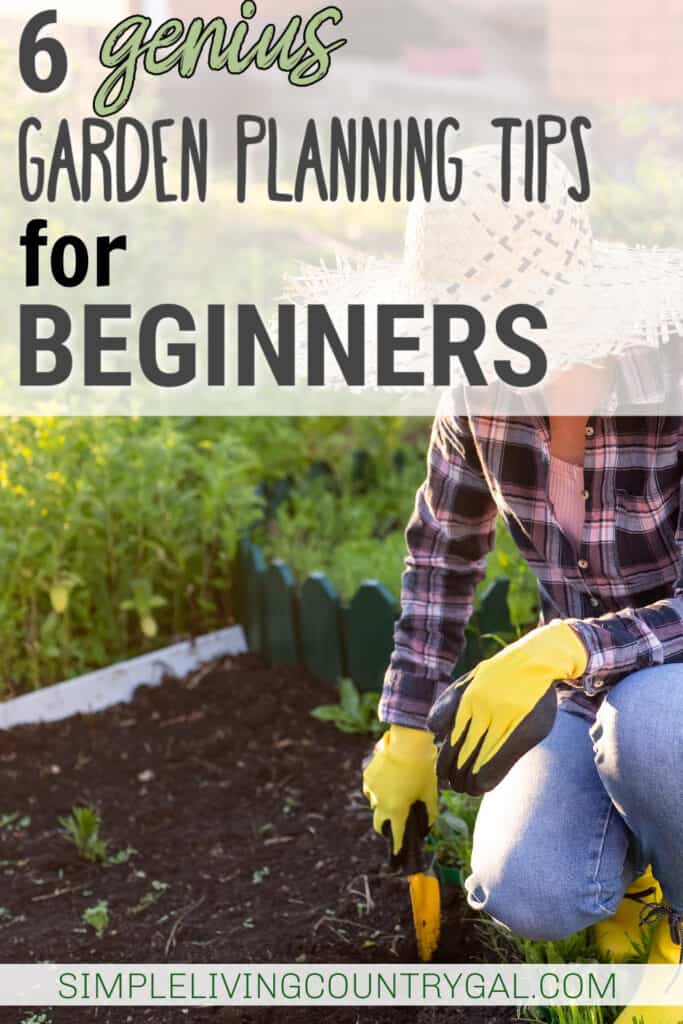
One of the best parts of homesteading is growing your own food, and many times, this is where folks start out.
It is an easy approach to living a self-reliant lifestyle that requires minimal investment to start.
When I started my very first vegetable garden, I thought bigger was the best way to go. My husband and I started a patch off to the side of our property, near the woods, so it would be out of the way. It was about 10 ft wide by 40 ft long, and we worked really hard to plant our seeds, doing all the things we thought we were supposed to do. Unfortunately, we did a few things wrong.
First, we started out with a garden that was much bigger than we could handle. Sure, we started out with good intentions, but after a while, the weeds grew faster than we were able to keep them out, and they choked a lot of our plants in the process.
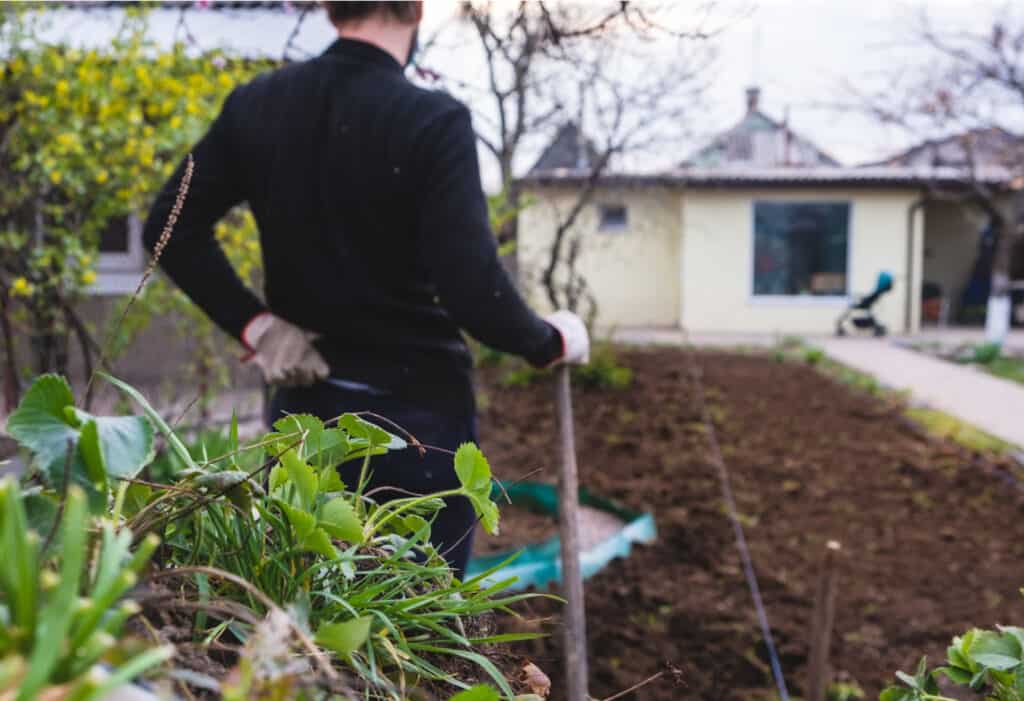
Another problem we had was being so close to the woods. Yes, it was out of the way of our main backyard, but it was close to where the rabbits and the deer could come out and have their fill.
Because of these two things, the first garden left a mark, a negative one, and it really deterred us from going forward. We put in a whole lot of work for very little results, and that soured our opinion on growing our own food.
I’ve learned a lot since that first garden 32 years ago, and if you’re here, my goal is to help you start out on a much better footing. To guide you in creating a plan that fits your family, how much time you have to work in your garden, choose the best location for growing, and a few additional tips along the way. By the end of this article, you should be confident enough to start your own backyard veggie garden.
What ways can you grow your own food?
There are many different ways to grow your food that will work for any sized family and any gardening skill level.
- Backyard garden
- Container garden
- Straw bale garden
- Orchard
- Greenhouse
- Indoor garden
- Hydroponic garden
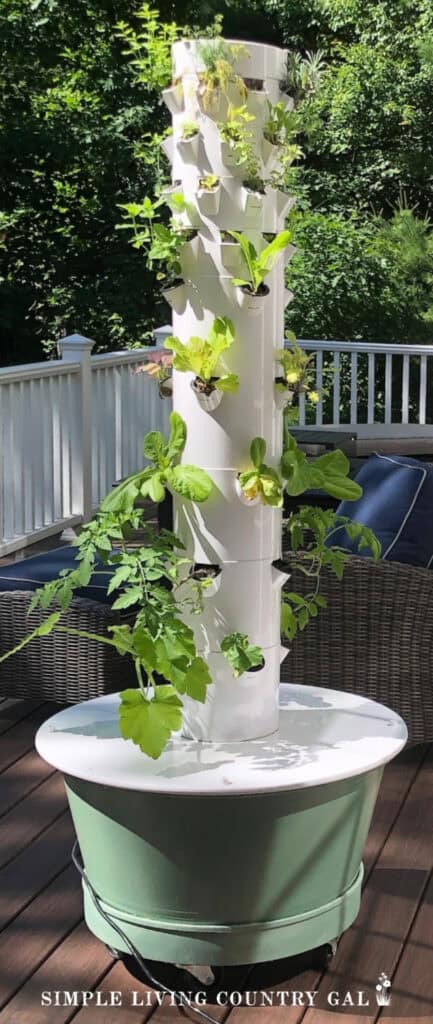
What is a good beginner garden layout?
This answer to this question really does vary. A beginner garden layout is one that is a size you can keep up with. Not too big that you are overwhelmed with weeding and watering and not too small that it doesn’t produce enough food to make it worth it.
SLCG Pro Tip: When choosing a garden size for the year, keep in mind if you will be traveling and, if so, how long you will be gone. For any trips over 2 days, you will need to have someone come to your house to tend your garden.
If you are taking quite a few trips you may want to downsize your garden for this year.
How to Map Out a Garden Layout
- Find a location in your yard that gets plenty of sun throughout the day.
- Decide on a size of garden that will work for this year. Be sure to keep in mind how busy you will be and if you will be traveling.
- Start by dividing your garden into sections that are 1-2 feet wide.
- Each section will be a row.
- In each row, assign a different plant to grow.
- Keep taller plants to the north side of your garden so they don’t block the sun of your smaller plants.
This layout makes watering, weeding, and harvesting easy, as you can reach the entire row from either side without stepping on the soil.
GREEN MOUNT Watering Wand, 24 Inches Sprayer Wand with Superior Stainless Head, Perfect for Hanging Baskets, Plants, Flowers, Shrubs, Garden and Lawn




Garden Planning for Beginners
Planning your garden can be a bit challenging if you are just starting out. Let’s look at a few practical tips to help you create a plan for your new summer garden.
Step #1. Make a Grow List
The first step in planning your garden is deciding what you want to grow. Knowing the food you enjoy will help you to grow a garden filled with food that will not go to waste. Ask your family what things they like so you can make this a project everyone will help with.
Get Tips for Preschool Gardening for ways on how to get your kids and grandkids to love growing food.
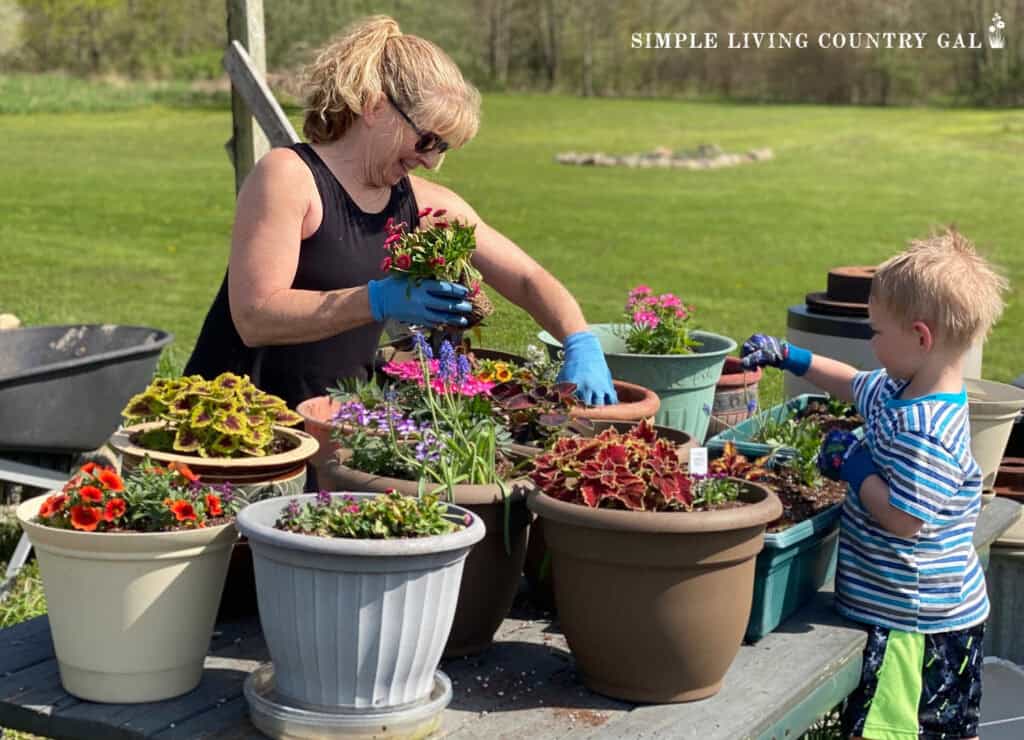
Be sure to take into consideration where you live and what the weather is like. Different plants grow better in different climates, so you will want to choose vegetables and fruits that are well-suited for your specific area.
This information can usually be found on seed packets or by doing some online research.
Action Tip: Make a list of your favorite vegetables and add in a few fruits and herbs you love as well. This is your dream list and does not mean you need to include each plant. Start out with a few now and add in 1-2 new plants next year.
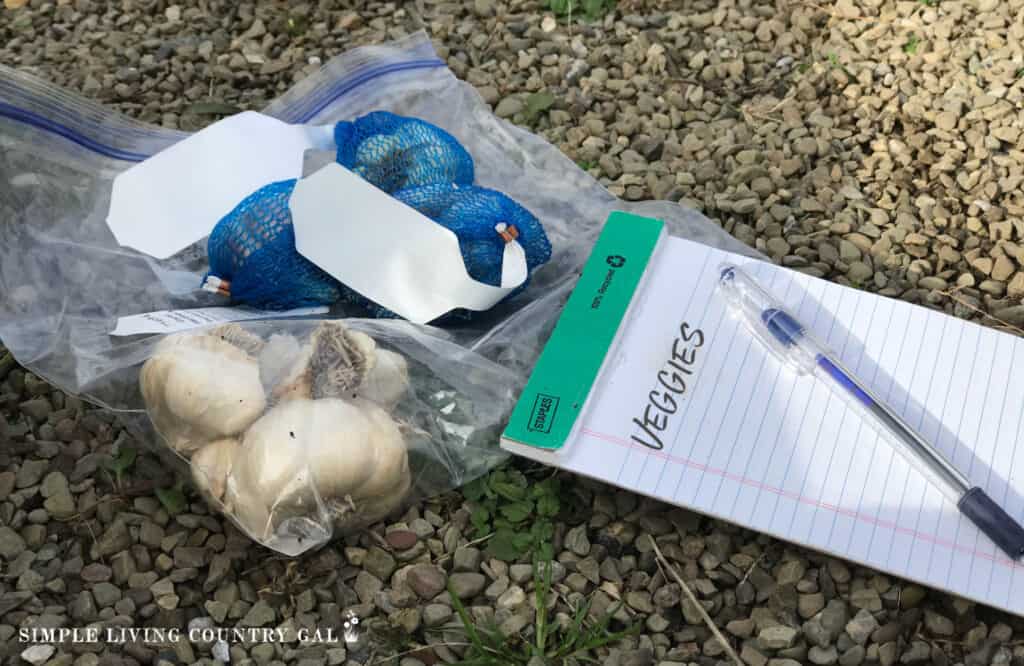
What are the eight easiest vegetables to grow for a beginner?
- Tomatoes
- Cucumbers
- Lettuce
- Zucchini and Squash
- Green Beans
- Carrots
- Radishes
- Onions
- Peppers
- Pumpkins
These are all great options for beginners and, many times, are family favorites in a kitchen.
Step #2. Garden Size
To avoid making the same beginner mistake I did, I suggest you start out small and grow from there. For a family of four, if using raised beds, you can start with two 4×8 beds, or you can start with a plot that is 10×10.
This is enough to grow a sampling of your favorite plants without getting overwhelmed halfway through the growing season.
Action Tip: Draw out your garden beds and write the plants you hope to grow in each. This will give you a better visual idea for step #3.
Square Foot Garden Planner+Guide

Step #3. Choose a Location
There are a few things to keep in mind when choosing where to put your backyard garden. Let’s look at some of the most important.
1. Sun – Most plants need a good amount of sunlight to grow, so choosing a location that gets at least 6 hours of full sun is ideal. Keep in mind that the sun will move throughout the day, so make sure your chosen spot has consistent light exposure.
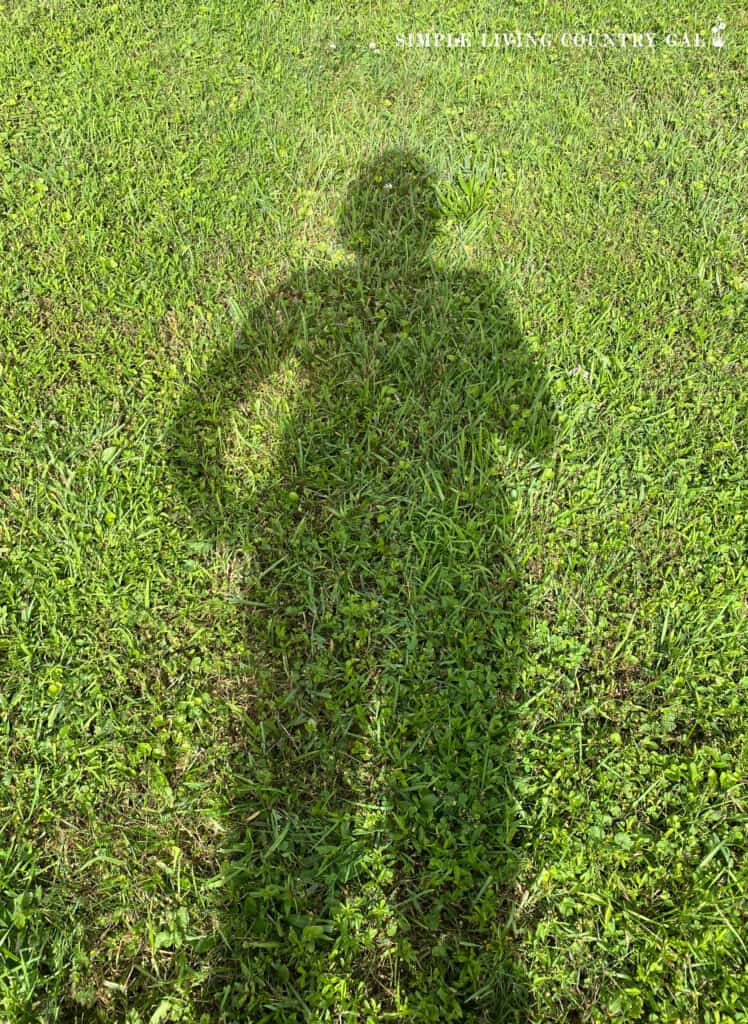
2. Water – Your garden will also need access to water, so make sure it’s not too far from a water source. Consider setting up a rain barrel or investing in a hose system to make watering easier and more convenient.
3. Soil – The type of soil you have will determine the quality of the plants you grow. Make sure to choose a location with good quality, well-drained soil that is rich in nutrients. If you have poor soil, consider creating raised beds filled with a mix of compost and topsoil. Do a soil test so you know where your soil is now so you can improve it for growing.
4. Space – Determine how much space you have available and refer to your list of plants you hope to grow. Make sure to leave enough room between beds for easier weeding and harvesting. Also, consider the height of your plants and make sure they won’t shade each other out as they grow.
Action Plan: Make a grid overview of your property. Mark the different areas of your backyard and measure them to get an accurate idea of how much space you have to work with. I am a visual person, and I find this one step really helps me plan more efficiently.
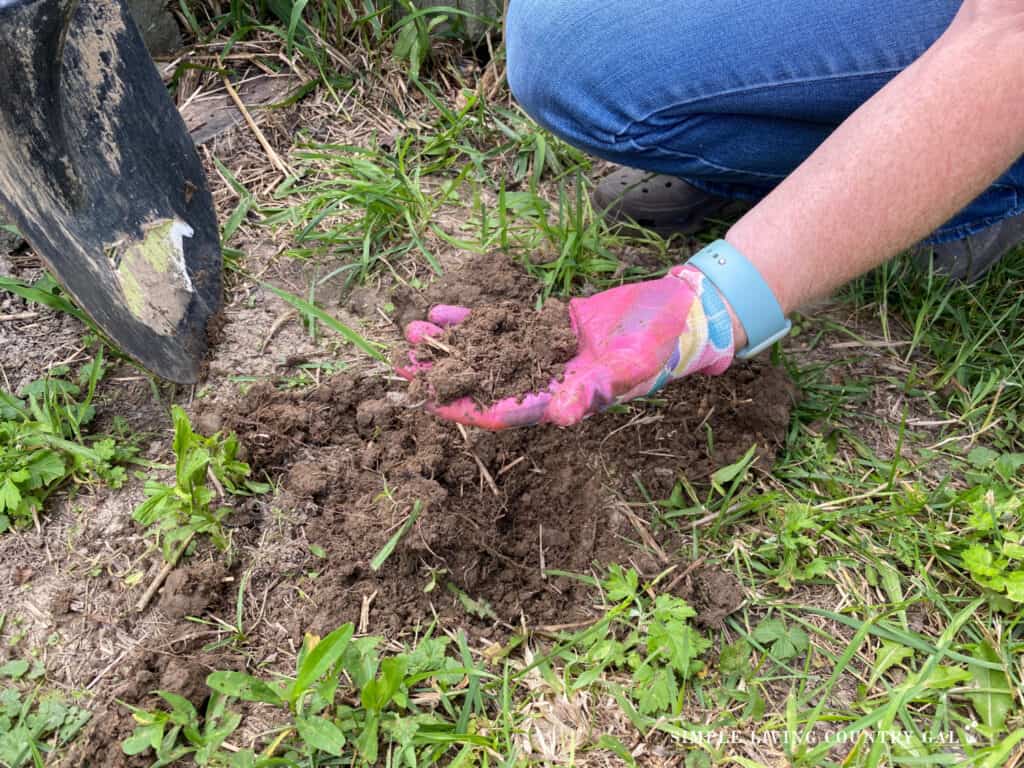
Step #4. Set a Budget
Once you have a good idea of the location and size of your garden, it’s time to set a budget. Gardening can be an inexpensive hobby, but costs can quickly add up if you’re not careful.
1. Seeds and plants – Seeds are less expensive than plants, but in some cases, you will need the plants depending on where you live and how long your growing season is.
2. Tools and equipment – You’ll need basic gardening tools such as a shovel, rake, and hoe. Consider borrowing or renting larger equipment like tillers to save money.
3. Fertilizers and compost – Depending on the quality of your soil, you may need to add fertilizers or compost to help your plants grow. These can be more expensive, so make sure to budget accordingly.
4. Pest control – Keeping animals and pests away from your garden is important as well. This may include a fence, companion plants for organic pest control, or purchasing seed-resistant seeds or seedlings.
Action Plan: Make a list of all the necessary items you will need for your garden and research their prices. Look for deals or alternative options to save money. Set a budget based on your findings.
Gardening Hand Tool Set 3 Pack – MDSXO Heavy Duty Gardening Kit with Non-Slip Soft Ergonomic Handle, Great Garden Gift for Women Men[Stainless Steel]![Gardening Hand Tool Set 3 Pack - MDSXO Heavy Duty Gardening Kit with Non-Slip Soft Ergonomic Handle, Great Garden Gift for Women Men[Stainless Steel]](https://easyproductdisplays.com/wp-content/uploads/2017/07/buy6.gif)



Step #5. Plan Your Garden Layout
Now that you have the location, size, and budget, it’s time to start planning your garden layout. If you are using raised beds you can plant families together, if you are using a plot layout then keeping things in sections will help your garden be more organized.
Remember to plant things near to each other that will help your garden be more successful. Here are a few tips.
1. Companion planting is important to keep in mind. Some plants help each other grow and thrive, while others can hinder growth if planted too close together.
2. Group plants with similar watering and sunlight needs together to make caring for them easier.
3. Consider using vertical space by planting vining or climbing plants on trellises or stakes, especially if you have a small garden area.
4. Take note of which direction your garden is facing and plant taller plants on the north side to prevent shading on smaller plants.
Action Plan: Sketch out a rough design of your garden layout, taking into consideration the tips listed above. Research companion planting for specific plants you plan to include in your garden. Purchase or make any necessary trellises or stakes for vertical gardening. Make sure to leave enough space.
Step #6. Make a Timeline
To ensure the success of your garden, it’s important to create a timeline for planting and maintenance. This will help you stay on track and make sure everything is done at the right time. Know your zone, so you have a better idea of when each plant can go into the ground. What you are planting will determine the timing as well.
For example, onions should be planted as soon as the ground is worked, whereas tomatoes should not be planted until the last frost is over.
Action Plan: Use a gardening calendar or planner to map out when you should start seeds, transplant seedlings, and harvest crops. Take into consideration the average last frost date in your area. Create a schedule for watering, fertilizing, and pest control. Stay flexible in case of any unforeseen weather changes or plant growth.
Having a plan for your beginner garden is a great way to start out your first growing season. Pick your location, prep the soil, and start planting from your plant list, and you will be off to the best start. Garden planning for beginners will help you love growing your own food, even in your first year.










![Gardening Hand Tool Set 3 Pack - MDSXO Heavy Duty Gardening Kit with Non-Slip Soft Ergonomic Handle, Great Garden Gift for Women Men[Stainless Steel]](https://m.media-amazon.com/images/I/41qgPIFVlJL._SL500_.jpg)



